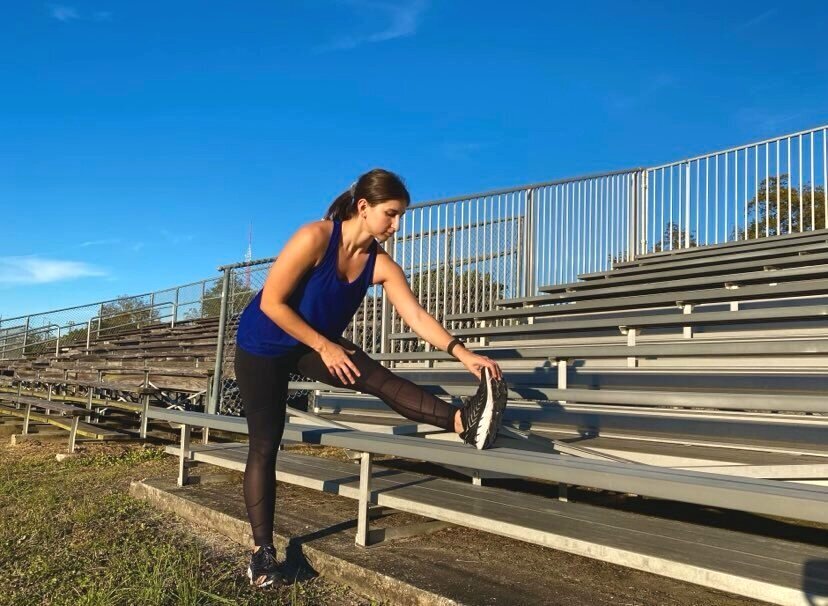


Running is one of the most popular form of exercise around the world as it can provide a ton of health benefits and has a low barrier of entry to starting. Unfortunately, there are a ton of running related injuries (RRI) that affect both competitive and recreational runners each year, limiting them from performing at their best potential.
While running related injuries are often multi-factorial, one of the main reasons why athletes experience an injury is due to inefficient progression of running loads. The human body is extremely remarkable in terms of being able to adapt when provided with the right amount of stress. When a certain stress is applied to the human body, the body will respond by trying to adapt to the added stressor. If the stimulus is too low, the body won’t adapt, too high of the stimulus, and our tissues can’t adapt fast enough and possible injuries can occur. Just with any kind of sport or activity such as training for a marathon or an Olympic weightlifting meet, you need to have the right program and progression to provide your body with the “optimal” stimulus in order to achieve the best performance while minimizing injury risk.
One of the most popular running progressions is the “10% Rule” where it states that athletes looking to increase their weekly running workload mileage should only increase in increments of 10%. (ex. If you’re running 30miles total in 1 week, you should only run 3 more miles (33miles) the following week). Unfortunately, the 10% Rule is a very generalized form of progression and we see that athletes in a study by (Buist et. Al, 2008) who utilized the 10% rule, did no better than a unsupervised running program, which resulted in both groups having a 20% injury rate in novice runners.
A better way to manage running workloads would be look at an athlete’s Acute:Chronic Workload ratio as a means of assessing the athlete’s current and past training history, levels of fatigue, and their readiness and ability to progress. It allows us to measure an athlete’s current workload stress on the their body and compares it to the long term workload stress on the body to examine what they have previously done and what they are prepared to do. The acute workload can be measured as the amount of work the body has performed in the last 7 days and the chronic workload is the average amount of work the body has performed in the last 4 weeks. A recent systematic review in February 2020 (Maupin et. Al 2020) took a look at athletic workloads across multiple different sports and saw that an Acute:Chronic workload ratio (ACWR) between 0.8-1.3 was the best range to improve performance while maintaining a low injury risk while a ratio greater than 1.5 resulted in increased injury risk.
The good thing about utilizing ACWR is that it also allows us to factor in subjective fatigue to autoregulate training as this can allow us to account for external factors such as nutrition, life stressors and sleep) all of which can affect performance. This can be done by utilizing RPE (Rate of Perceived Exertion) into the ACWR formula. The level of difficulty or RPE (Rate of Perceived Exertion) is a scale from 0-10 where 0 is basically resting while 10 would be the hardest race they’ve ever ran. Athletes can basically take their most recent run and give it a RPE rating for their training that day.
For running, we can calculate the chronic workload as the average (miles or time ran) x (difficulty of the run) for each week over the last 4 weeks
For each week the weekly running loads would be calculated and the last months work would be averaged together to find the running loads
Ex.
Week 1: 1275
Week 2: 1400
Week 3: 1550
Week 4: 1350
Average Chronic Load: (1275 + 1400 + 1550 + 1350) / 4 = 1394
Week 5: 1600 (Acute Workload)
Acute:Chronic Workload Ratio: 1600: 1394 = 1.14
Athletes and coaches can utilize this as a rolling model to view and monitor workloads, as well as utilize it as a helpful insight into training load progressions and periodization. Obviously each athlete will vary differently based on their own individual adaptability, but for the regular runner just starting out, staying between the 0.8-1.3 range will be an ideal place to start. “Running too much” and “high training workloads” may not be a cause or problem of increased injury risk but rather HOW you get to those high training workloads may be the issue. How you increase your training and whether or not you’re maintaining a solid chronic workload will be bigger factors that help protect you from future injuries.
If you’re an athlete who has been experiencing long histories of running injuries, I highly encourage you to implement this into your training. This could be what changes that pattern!

0

0
Comments :